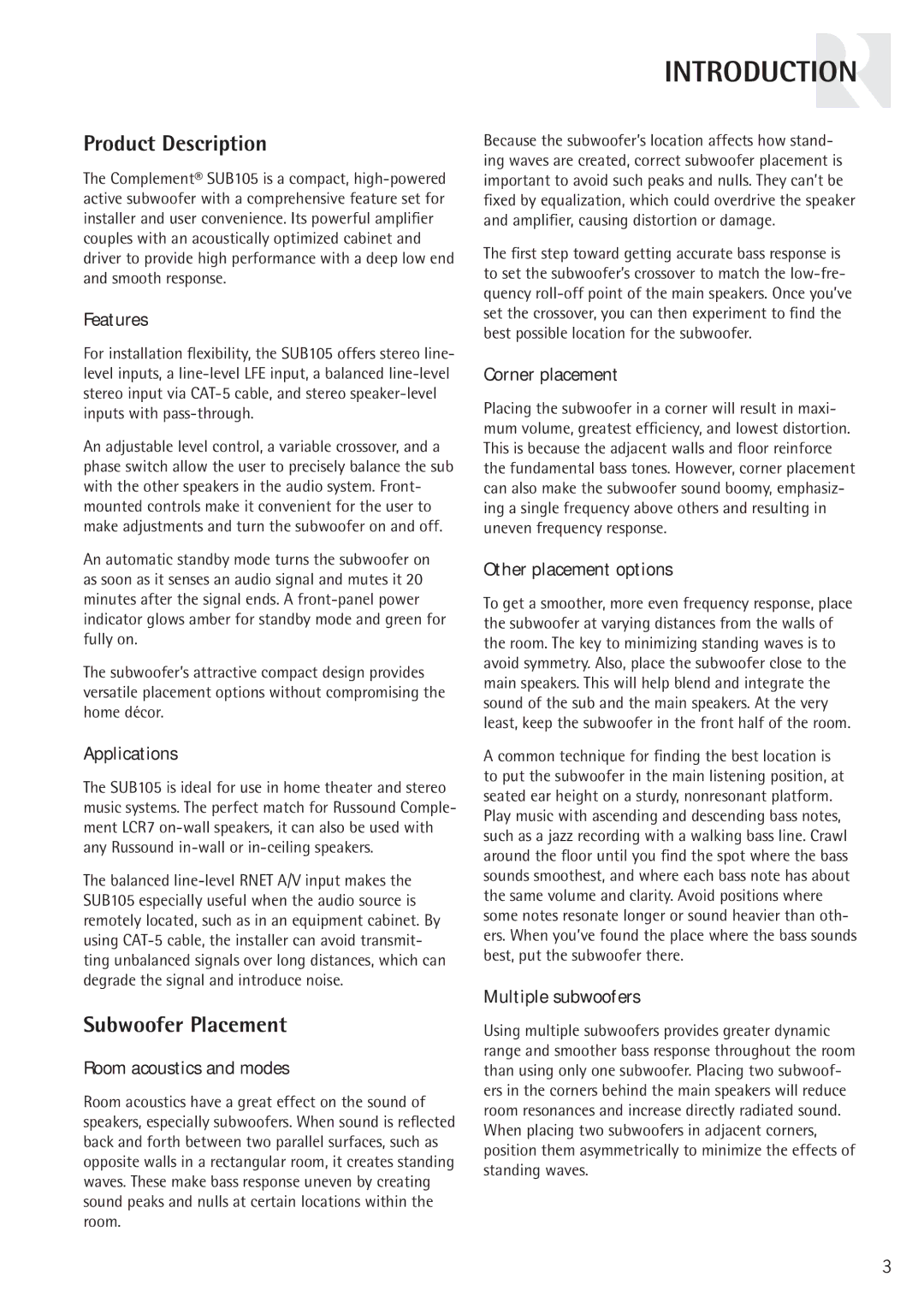
Product Description
The Complement® SUB105 is a compact,
Features
For installation flexibility, the SUB105 offers stereo line- level inputs, a
An adjustable level control, a variable crossover, and a phase switch allow the user to precisely balance the sub with the other speakers in the audio system. Front- mounted controls make it convenient for the user to make adjustments and turn the subwoofer on and off.
An automatic standby mode turns the subwoofer on as soon as it senses an audio signal and mutes it 20 minutes after the signal ends. A
The subwoofer’s attractive compact design provides versatile placement options without compromising the home décor.
Applications
The SUB105 is ideal for use in home theater and stereo music systems. The perfect match for Russound Comple- ment LCR7
The balanced
Subwoofer Placement
Room acoustics and modes
Room acoustics have a great effect on the sound of speakers, especially subwoofers. When sound is reflected back and forth between two parallel surfaces, such as opposite walls in a rectangular room, it creates standing waves. These make bass response uneven by creating sound peaks and nulls at certain locations within the room.
INTRODUCTION
Because the subwoofer’s location affects how stand- ing waves are created, correct subwoofer placement is important to avoid such peaks and nulls. They can’t be fixed by equalization, which could overdrive the speaker and amplifier, causing distortion or damage.
The first step toward getting accurate bass response is to set the subwoofer’s crossover to match the
Corner placement
Placing the subwoofer in a corner will result in maxi- mum volume, greatest efficiency, and lowest distortion. This is because the adjacent walls and floor reinforce the fundamental bass tones. However, corner placement can also make the subwoofer sound boomy, emphasiz- ing a single frequency above others and resulting in uneven frequency response.
Other placement options
To get a smoother, more even frequency response, place the subwoofer at varying distances from the walls of the room. The key to minimizing standing waves is to avoid symmetry. Also, place the subwoofer close to the main speakers. This will help blend and integrate the sound of the sub and the main speakers. At the very least, keep the subwoofer in the front half of the room.
A common technique for finding the best location is to put the subwoofer in the main listening position, at seated ear height on a sturdy, nonresonant platform. Play music with ascending and descending bass notes, such as a jazz recording with a walking bass line. Crawl around the floor until you find the spot where the bass sounds smoothest, and where each bass note has about the same volume and clarity. Avoid positions where some notes resonate longer or sound heavier than oth- ers. When you’ve found the place where the bass sounds best, put the subwoofer there.
Multiple subwoofers
Using multiple subwoofers provides greater dynamic range and smoother bass response throughout the room than using only one subwoofer. Placing two subwoof- ers in the corners behind the main speakers will reduce room resonances and increase directly radiated sound. When placing two subwoofers in adjacent corners, position them asymmetrically to minimize the effects of standing waves.
3
